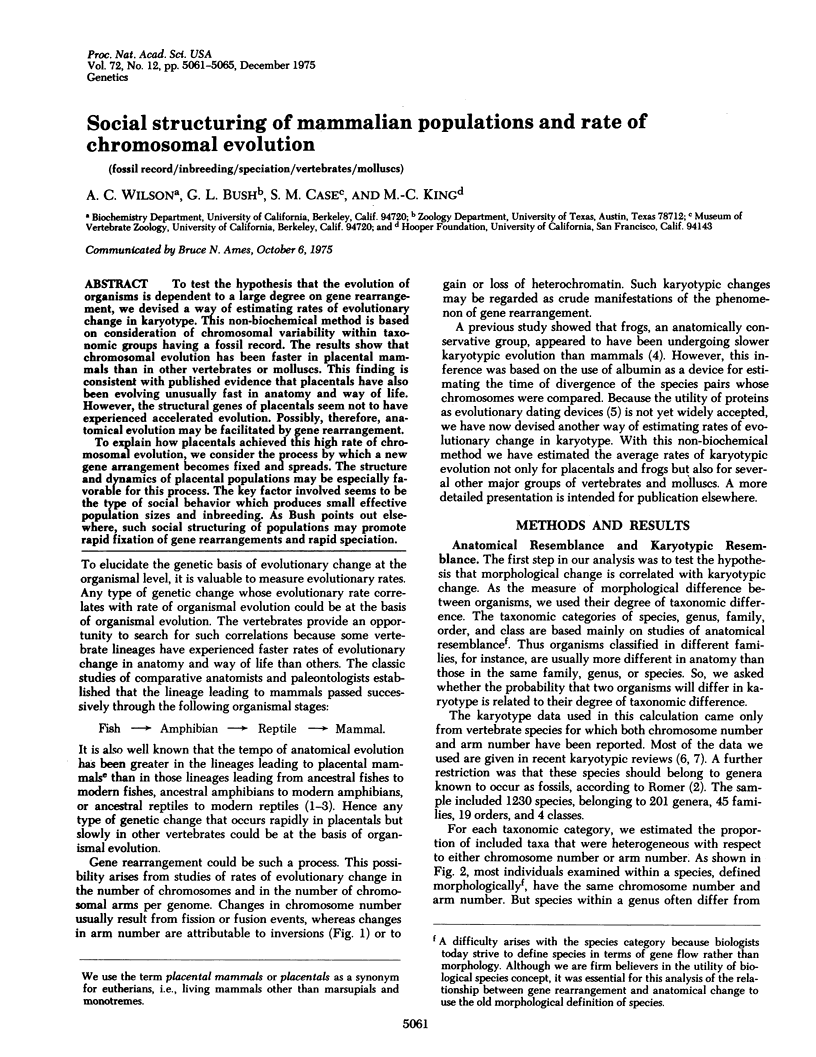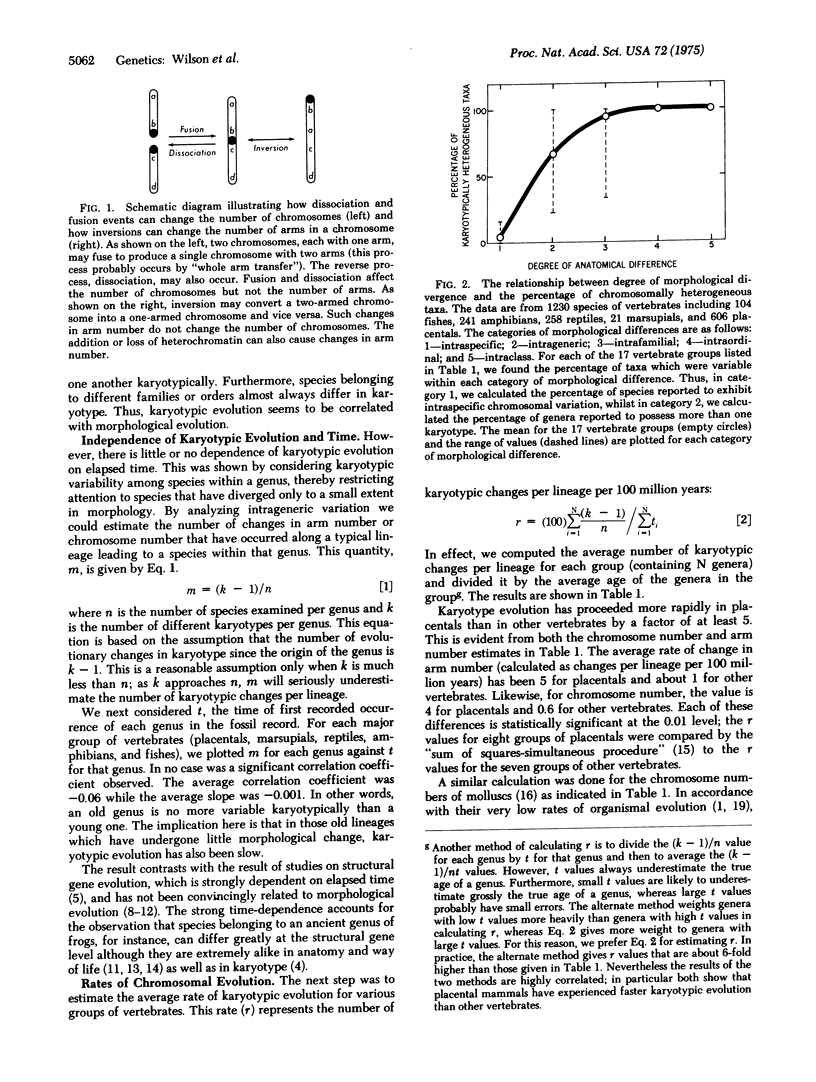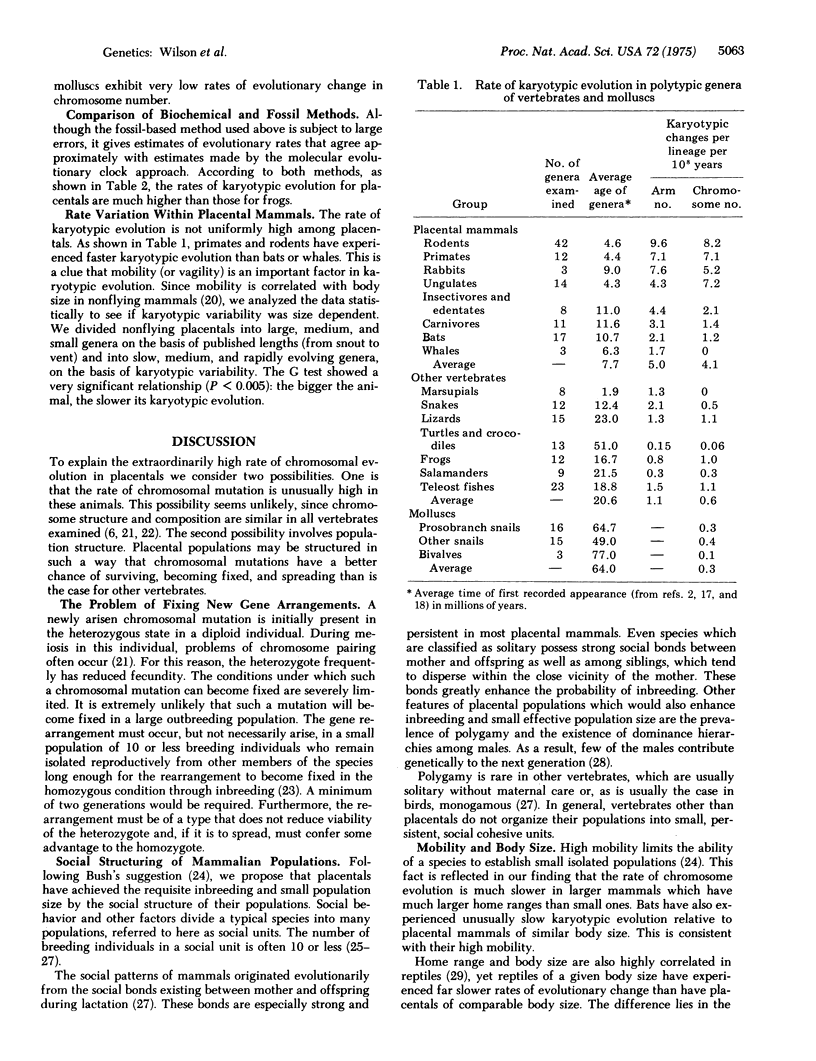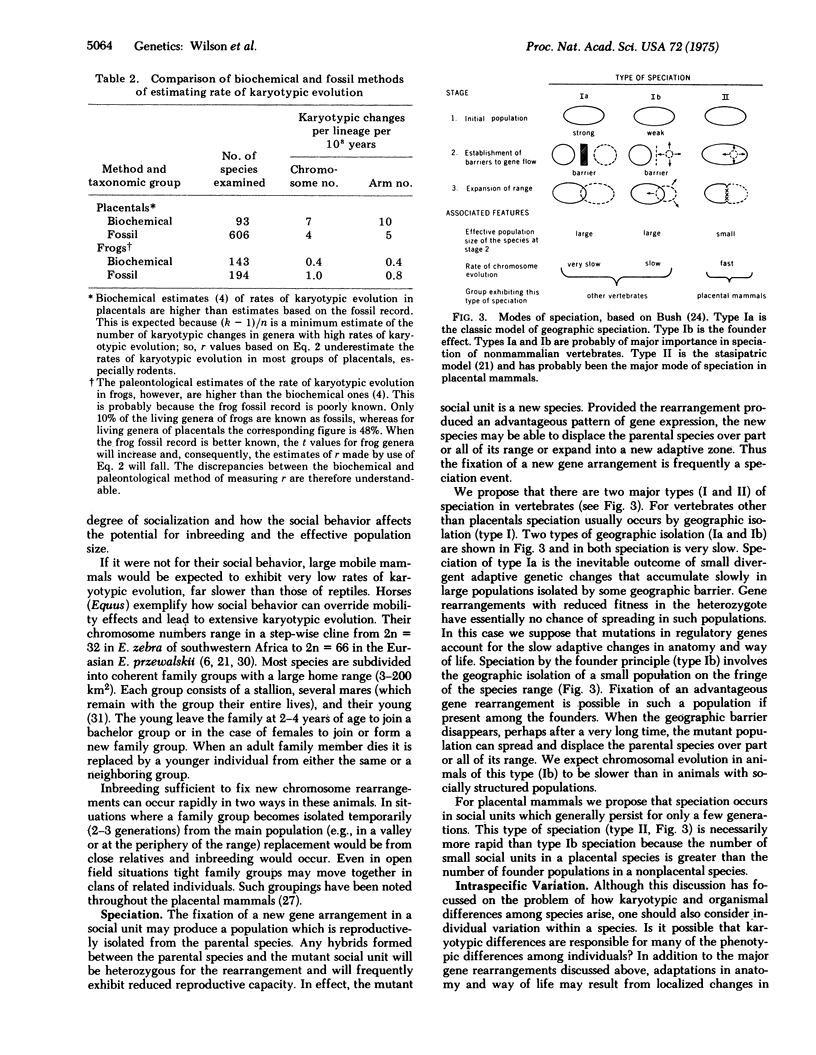Abstract
To test the hypothesis that the evolution of organisms is dependent to a large degree on gene rearrangement, we devised a way of estimating rates of evolutionary change in karyotype. This non-biochemical method is based on consideration of chromosomal variability within taxonomic groups having a fossil record. The results show that chromosomal evolution has been faster in placental mammals than in other vertebrates or molluscs. This finding is consistent with published evidence that placentals have also been evolving unusually fast in anatomy and way of life. However, the structural genes of placentals seem not to have experienced accelerated evolution. Possibly, therefore, anatomical evolution may be facilitated by gene rearrangement. To explain how placentals achieved this rate of chromosomal evolution, we consider the process by which a new gene arrangement becomes fixed and spreads. The structure and dynamics of placental populations may be especially favorable for this process. The key factor involved seems to be the type of social behavior which produces small effective population sizes and inbreeding. As Bush points out elsewhere, such social structuring of populations may promote rapid fixation of gene rearrangements and rapid speciation.
Full text
PDF




Selected References
These references are in PubMed. This may not be the complete list of references from this article.
- Elgin S. C., Weintraub H. Chromosomal proteins and chromatin structure. Annu Rev Biochem. 1975;44:725–774. doi: 10.1146/annurev.bi.44.070175.003453. [DOI] [PubMed] [Google Scholar]
- King M. C., Wilson A. C. Evolution at two levels in humans and chimpanzees. Science. 1975 Apr 11;188(4184):107–116. doi: 10.1126/science.1090005. [DOI] [PubMed] [Google Scholar]
- Lewontin R C, Dunn L C. The Evolutionary Dynamics of a Polymorphism in the House Mouse. Genetics. 1960 Jun;45(6):705–722. doi: 10.1093/genetics/45.6.705. [DOI] [PMC free article] [PubMed] [Google Scholar]
- Maxson L. R., Wilson A. C. Convergent morphological evolution detected by studying proteins of tree frogs in the Hyla eximia species group. Science. 1974 Jul 5;185(4145):66–68. doi: 10.1126/science.185.4145.66. [DOI] [PubMed] [Google Scholar]
- Selander R. K. Behavior and genetic variation in natural populations. Am Zool. 1970 Feb;10(1):53–66. doi: 10.1093/icb/10.1.53. [DOI] [PubMed] [Google Scholar]
- Stanley S. M. A theory of evolution above the species level. Proc Natl Acad Sci U S A. 1975 Feb;72(2):646–650. doi: 10.1073/pnas.72.2.646. [DOI] [PMC free article] [PubMed] [Google Scholar]
- Van Valen L. Two modes of evolution. Nature. 1974 Nov 22;252(5481):298–300. doi: 10.1038/252298a0. [DOI] [PubMed] [Google Scholar]
- Wilson A. C., Maxson L. R., Sarich V. M. Two types of molecular evolution. Evidence from studies of interspecific hybridization. Proc Natl Acad Sci U S A. 1974 Jul;71(7):2843–2847. doi: 10.1073/pnas.71.7.2843. [DOI] [PMC free article] [PubMed] [Google Scholar]
- Wilson A. C., Sarich V. M., Maxson L. R. The importance of gene rearrangement in evolution: evidence from studies on rates of chromosomal, protein, and anatomical evolution. Proc Natl Acad Sci U S A. 1974 Aug;71(8):3028–3030. doi: 10.1073/pnas.71.8.3028. [DOI] [PMC free article] [PubMed] [Google Scholar]


